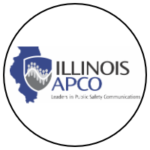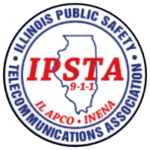From my vantage point, our profession of first responders in public safety communications is filled with leaders and has a deep bench of future leaders. In my opinion, this is a pretty exciting time. In the early 90’s I never would have considered myself a leader, future leader or aspiring leader. Quite frankly, I was simply happy as a blue shirt. As all things evolve, so did my outlook on life and my career. It was because of a thirst for knowledge, a desire to make things better for the next person and some amazing mentors in my life (we’ll talk about those down the road) that I pursued additional challenges and responsibilities.
I’ve had several industry educational opportunities over my tenure in public safety and as a result have quite a few initials that I can put after my name. In the Summer of 2017, I was blessed with an opportunity to attend APCO’s Certified Public Safety Executive (CPE) course. Initials that I’m honored to have after my name. My six-month journey with my classmates in CPE03, now my extended family, was truly “life changing.” As cliché as those attending before me sounded, I didn’t understand it until I went through it. This opportunity provided me with a very well-rounded understanding of leadership and even more so a deep introspective view on my leadership style.
During those six months, I did a lot of reading. Some assigned and others just the result of my constant thirst for knowledge. I encourage you to do the same as it will pay dividends. In those readings, I saw leadership styles listed and defined a bit differently. Let’s take a quick glance under the hood:
Participative Leadership Style
This is my default style of leading. I place significant value on the input of my team and peers. This tremendous support network allows me to gather an analyze data before making most decisions. While it is understood that the final decision often rests with me in most instances, I am confident that by allowing input, I improve the strength of the team and their support of the mission. Having employees make contributions often boots morale. Perhaps one of the most important characteristics of this method is the ability to lead by example, when changes are needed, and assisting our staff in understanding and accepting those changes.
Engaged Leadership Style
Similar to the “participative” style of leading, being engaged places me actively in all levels of my profession. By being involved, I am able to actively observe and listen to what they do and say. With this, I can motivate them to perform at a higher level.
Coaching Leadership Style
Complimenting the “engaged” method, as a coach, I am focusing a tremendous amount of effort on developing future leaders. It would please me to leave a legacy behind which includes a culture in public safety communications where staff is educated, mentored and pushed to succeed and take ownership in their careers and the lives of others which we are dedicated to serve.
These are not only my preferred leadership styles in the professional arena, but in my personal life as well. In my opinion, people that act and lead one way at work and another at home may struggle under normal pressures to make decisions and lead appropriately. There is no greater truth than consistency.
Under pressure, I still continue to utilize the Participative, Engaged and Coaching methods. It is during these times that it is crucial to guide others and to lead by example. Often the pressure times or the high impact, low frequency type of events are what makes or breaks a person’s confidence level. For me to change styles or step too far into the equation, that displays my lack of leadership and more importantly my lack of trust. However, there are times when a pressure type situation requires me to shift more towards a Directive style and simply require compliance with policies or directives. In our profession, there are times where the allowance for questioning and creativity aren’t embraced due to the mission critical and life or death impact.
Take some time to understand leadership styles. Make that uncomfortable journey and strongly evaluate your style(s). Allow your wealth of knowledge to benefit others.
Jason E. Kern, CPE, RPL, ENP, COML is currently the Executive Director of Southeast Emergency Communications in Crystal Lake, IL and a North Central Regional Board of Directors Member with APCO. He has been involved in multiple facets of public safety since 1991 and dedicated nearly 25 years to the public safety communications industry. With over two decades of active involvement in APCO, he has been honored with Senior Member distinction in addition to Chapter Senior and Chapter Life with Illinois APCO.



